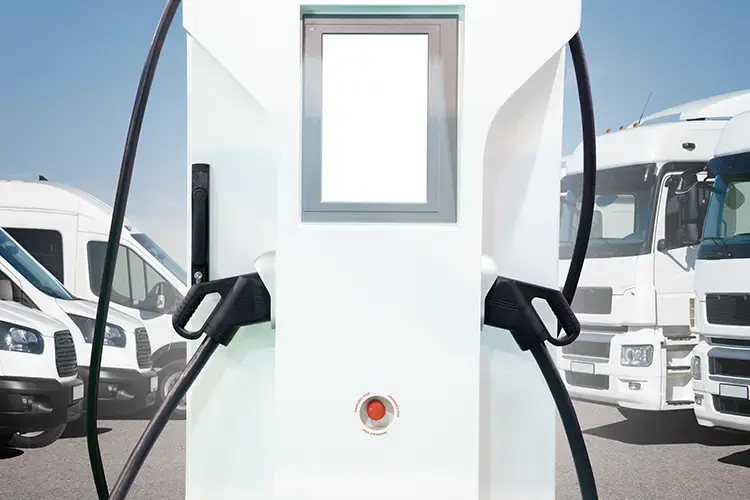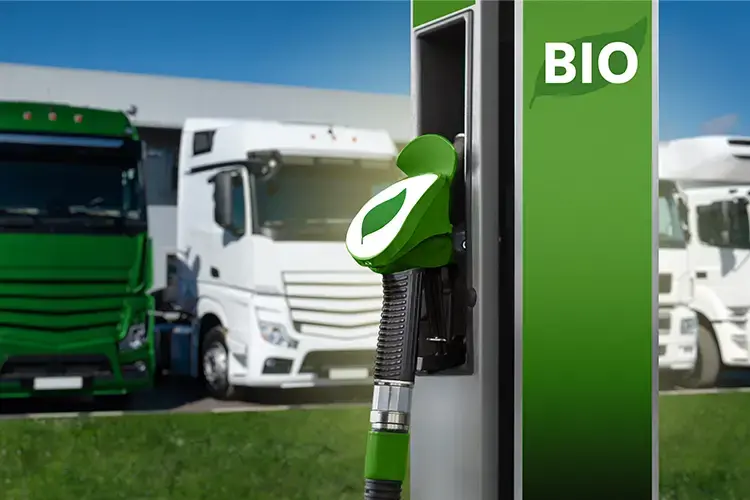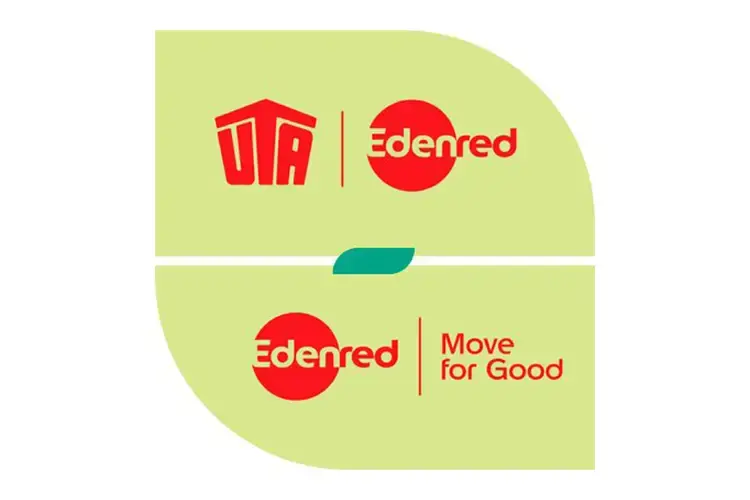Green logistics: benefits and actions
Inhaltsverzeichnis
The most important facts in brief
- Green logistics is the application of sustainable practices in logistics and supply chain management to minimise the impact on the environment.
- Green logistics can have benefits for both the environment and the business itself.
- Switching to electric trucks, optimising routes or adapting warehouses can be steps towards greater sustainability.
TOC - Inhaltsverzeichnis @ TRIALTA - Hier benötigen wir ein TOC Modul
- Thema 1
- Thema 2
- Thema 3
- Thema 4
What is green logistics?
Green logistics is the adoption of sustainable practices within logistics and supply chain management to minimise environmental impact. It focuses on reducing the carbon footprint through green transport, efficient packaging, responsible recycling and strategic storage.
Also known as eco-logistics or sustainable logistics, it aims to reduce the negative environmental impact of activities such as transportation, warehousing, and distribution. This approach involves optimising energy consumption, reducing waste and conserving resources across all supply chain processes. Companies implementing green logistics strive to balance economic activities with environmental stewardship, ensuring operational efficiency without compromising the health of the planet or customer satisfaction.

How transport can benefit from green logistics
The transport industry stands at a pivotal moment where integrating green logistics can bring transformative benefits, both ecologically and operationally. As global attention shifts towards sustainability, the transport sector is uniquely positioned to lead by example, adopting practices that not only mitigate its environmental impact but also enhance its operational efficiency and market position.
Ecological benefits
Green logistics offers significant environmental benefits that are critical to addressing the environmental challenges facing the transport industry. First, switching to greener practices significantly reduces greenhouse gas emissions. This reduction is critical in the fight against climate change and contributes to global efforts to limit the average temperature rise. In addition, saving energy throughout the logistics chain – from fleet operations to warehouse management – leads to a more sustainable use of resources. This not only helps to conserve natural resources, but also reduces the impact on ecosystems. Minimising unnecessary journeys and optimising logistics processes also significantly reduces air and noise pollution, improving the quality of life for people living near transport routes and logistics centres.
Operational benefits
There are many business benefits to adopting green logistics that are both financially and strategically advantageous for companies in the transport sector. Significant cost savings can be achieved through lower operating costs, particularly through lower energy costs and reduced fuel consumption. These savings strengthen the financial position of companies, allowing them to invest in further innovation or improve profitability.
In terms of branding, companies that prioritise sustainability improve their reputation and become more attractive to a growing group of environmentally conscious consumers and business partners. This reputation helps them to differentiate themselves in a competitive marketplace and can lead to increased customer loyalty and brand equity. By complying with international environmental regulations and obtaining sustainability certifications, companies not only reduce the risk of legal consequences, but also gain a competitive advantage. Compliance demonstrates good governance and operational excellence.
Finally, organisations that position themselves as leaders in sustainability attract and retain top talent, especially those that value corporate responsibility. Employer branding not only improves morale, but also encourages innovation, as employees are often more engaged and motivated in organisations that reflect their personal values. Taken together, these factors contribute to long-term business success and sustainability in the transport industry.
How to green logistics?
As companies increasingly seek to reduce their environmental footprint, the adoption of green logistics practices has become essential. The measures described below are just a few examples of sustainable logistics. They also show how companies can implement them. Depending on a company's specific needs and capabilities, additional measures can be taken to further green its logistics operations.
Fleet modernisation with electric trucks
An effective way to promote green logistics in the transport industry is to modernise the fleet by integrating electric trucks. These vehicles contribute to a significant reduction in greenhouse gas emissions by minimising dependence on fossil fuels. Electric trucks also offer the advantage of lower operating costs as they require less maintenance. The lower cost of electricity compared to traditional fuels also makes them cheaper to run in the long term. Switching to electric vehicles is therefore not only a sustainable decision for the environment, but also a strategically smart investment for the future viability and competitiveness of the transport industry.

Route optimisation through digitalisation
Optimising delivery and transport routes is another step towards more sustainable logistics. By using advanced route planning software, companies can minimise the distances their fleets travel while avoiding traffic delays. This not only reduces fuel consumption and associated emissions, but also optimises delivery times. Route optimisation helps transport companies improve their operational efficiency while reducing their environmental impact.
Energy efficient warehousing
This includes measures to implement energy efficiency measures in warehouses and distribution centres. These measures comprise the installation of LED lighting, the improvement of thermal insulation, the utilisation of solar energy and the use of modern heating, ventilation and air conditioning systems. As a result, energy consumption and thus operating costs are significantly reduced. In addition, the measures help to reduce CO2 emissions and minimise the environmental impact of logistics activities.
KPIs and performance measurement
Setting and tracking Key Performance Indicators (KPIs) for environmental metrics such as carbon emissions, energy consumption and waste reduction is fundamental for any organisation looking to improve its environmental performance. By monitoring these indicators, companies can identify areas where they can further optimise their sustainability practices. This data allows informed decisions to be made and progress towards environmental goals to be measured.
Compliance and certification
To demonstrate the credibility of their green initiatives, companies should ensure compliance with local and international environmental regulations and pursue certifications such as ISO 14001 (Environmental Management Systems – Requirements with Guidance for Use) or LEED (Leadership in Energy and Environmental Design). These certifications not only demonstrate a company's commitment to the environment, but can also help increase competitiveness and build trust with customers and other stakeholders.
How UTA Edenred is contributing to greater sustainability in logistics and transport
With Move for Good, UTA is contributing to greater sustainability in logistics and transport. The programme supports customers in complying with environmental regulations, while also focusing on economic efficiency.
Move for Good provides seamless access to key infrastructure in both urban and rural areas, which is crucial for European transport and logistics companies and fleet operators to remain mobile and economically successful. The environmentally friendly solutions and services of the UTA Edenred Move for Good programme include, for example:

- UTA Carbon Offset: With the CO2 offset programme, customers in transport and logistics can directly reduce the CO2 footprint of their fleet. The UTA Card records the fleet's CO2 emissions per litre of fuel purchased, calculated monthly and offset by up to 100 % through investments in certified climate protection projects.
- UTA Cards: You can choose between the UTA Card, which allows customers to refuel throughout Europe, and other cards for customers who are looking for an environmentally friendly solution and mainly want to use e-vehicles and sustainable fuels such as HVO100. With the charging card for electric Mercedes-Benz Trucks, we also offer a solution for fleet managers who have Mercedes-Benz Trucks in their fleet.
- UTA eCharge: In cooperation with Milence, UTA Edenred customers have access to numerous charging stations throughout Europe. Milence's constantly growing network – the company plans to build 1,700 charging stations in Europe by 2027 – enables drivers of e-trucks to always find suitable charging stations along their route.
- UTA Edenred Combined Traffic Service: UTA Edenred's service, which enables a truck to be loaded onto a train and thus transported by rail via a service partner, provides customers with several benefits: for example, a reduction in CO2 emissions and fuel costs as the vehicle is not on the road. This transport method also supports compliance with the legally prescribed rest periods and the ban on driving at night, on Sundays and on public holidays. In addition, there are no toll charges, which leads to further cost savings, and drivers can rest better on longer journeys.
Sources:
